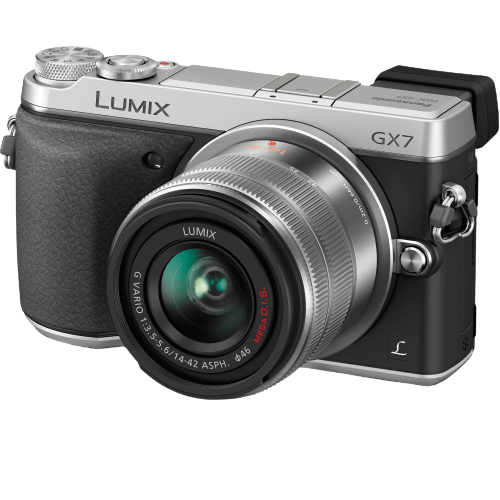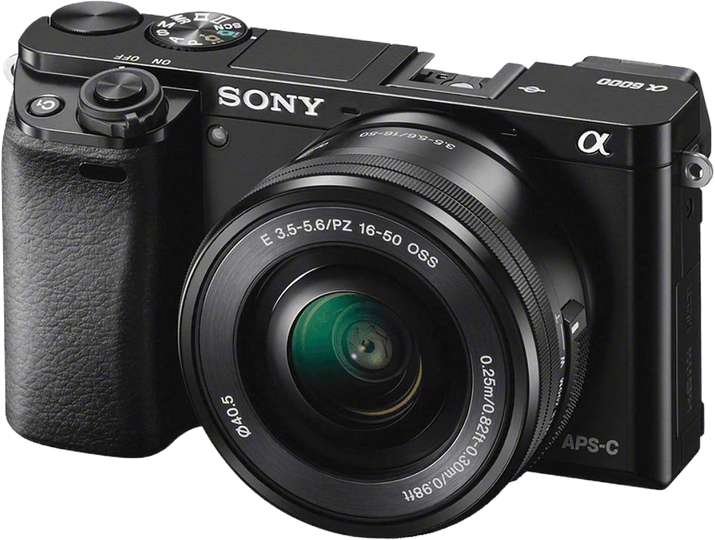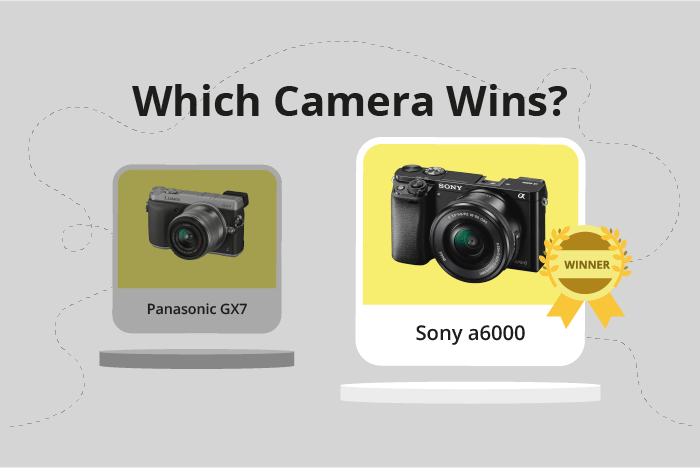Panasonic Lumix DMC-GX7 vs Sony a6000 Comparison
Panasonic Lumix DMC-GX7

Sony a6000

The Sony a6000 outperforms the Panasonic Lumix DMC-GX7 with a score of 57/100 compared to the latter’s 52/100. Both cameras are mirrorless and were released in 2013 and 2014, respectively. The Sony a6000 is the more affordable option with a launch price of $799, while the Panasonic Lumix DMC-GX7 was priced at $999.
In terms of size and weight, the Sony a6000 has the edge, measuring 120 x 67 x 45mm and weighing 344g. The Panasonic Lumix DMC-GX7 is slightly larger and heavier at 123 x 71 x 55mm and 402g. This makes the Sony a6000 more compact and portable, ideal for photographers on the go.
However, the Panasonic Lumix DMC-GX7 does have its merits, offering a solid performance despite its slightly lower score. It could be a suitable choice for those who prioritize other factors over size and weight.
Considering the scores, price, and size, the Sony a6000 appears to be the better option for most users, offering a higher performance at a lower cost and in a more compact package.
Panasonic Lumix DMC-GX7 vs Sony a6000 Overview and Optics
The Sony a6000 outperforms the Panasonic Lumix DMC-GX7 in optics with a score of 67/100 compared to the GX7’s 54/100. Both cameras share some common specifications, such as having a CMOS sensor type and offering a variety of lens options with their respective lens mounts (Micro 4/3 for GX7 and Sony E for a6000).
The Sony a6000 surpasses the GX7 with its higher megapixel count of 24.3, faster shooting speed of 11, and a superior DXOMARK sensor score of 82. These factors contribute to the a6000’s better image quality and performance. Additionally, the a6000 has an APS-C sensor size and 3:2 aspect ratio, providing a larger image capture area and more flexibility in composition.
However, the Panasonic Lumix DMC-GX7 offers some advantages over the Sony a6000, such as built-in image stabilization. This feature helps to reduce camera shake and produce sharper images, especially in low-light situations or when using slower shutter speeds. The GX7 also has a 4:3 aspect ratio, which might be preferred by some users for specific photographic styles.
To conclude, the Sony a6000 is the superior camera in terms of optics due to its higher megapixel count, faster shooting speed, and better DXOMARK sensor score. This leads to enhanced image quality and performance. On the other hand, the Panasonic Lumix DMC-GX7 has the advantage of built-in image stabilization, making it a viable option for users who prioritize this feature.
Panasonic Lumix DMC-GX7 vs Sony a6000 Video Performance
When comparing the video capabilities of the Panasonic Lumix DMC-GX7 and the Sony a6000, both cameras tie with a video score of 56 out of 100. This equal score reflects the similarities in their video specifications.
Both the Panasonic Lumix DMC-GX7 and the Sony a6000 share the same maximum video resolution of Full HD and video dimensions of 1920 x 1080. Additionally, they both have a maximum video frame rate of 60fps. Neither camera has built-in time-lapse functionality.
Despite their identical scores and shared specifications, each camera may offer advantages in different aspects. The Panasonic Lumix DMC-GX7 might excel in areas such as color reproduction, low light performance, or autofocus capabilities, while the Sony a6000 could provide better image stabilization, audio quality, or ease of use.
However, without specific details on these aspects, it is difficult to determine which camera is better in terms of video performance. It is essential for potential buyers to research and consider their specific needs and preferences when choosing between these two cameras, as their video capabilities are very similar.
After examining the video capabilities of both the Panasonic Lumix DMC-GX7 and the Sony a6000, it is clear that they share many similarities in their specifications. While each camera may have unique advantages, these are not evident based on the provided information. As a result, potential buyers should prioritize their specific video requirements and preferences when choosing between these two cameras.
Panasonic Lumix DMC-GX7 vs Sony a6000 Features and Benefits
The Panasonic Lumix DMC-GX7 emerges as the winner in the features comparison with a score of 57/100, while the Sony a6000 scores 41/100. Both cameras share some common specifications, such as a 3-inch screen size, flip screen, lack of GPS, WIFI connectivity, and absence of Bluetooth.
The Lumix DMC-GX7 has a higher screen resolution of 1,040,000 dots compared to the a6000’s 921,600 dots, providing a sharper and clearer display. Additionally, the Lumix DMC-GX7 features a touchscreen, making it more user-friendly and convenient to navigate through settings and functions.
On the other hand, the Sony a6000 does not have any significant advantages over the Lumix DMC-GX7 in the features department. Both cameras have a flip screen, but the a6000 lacks a touchscreen, which sets it at a disadvantage compared to the Lumix DMC-GX7.
In terms of features, the Panasonic Lumix DMC-GX7 is the superior camera with a higher score and better specifications, such as a sharper screen and a touchscreen. The Sony a6000 does not offer any standout advantages in this category. However, it is essential to consider other aspects, such as performance, optics, and video capabilities, when choosing between these cameras.
Panasonic Lumix DMC-GX7 vs Sony a6000 Storage and Battery
The Panasonic Lumix DMC-GX7 and the Sony a6000 have the same storage and battery score of 21/100. Both cameras have a single memory card slot and accept SD, SDHC, and SDXC cards. However, the Sony a6000 also accepts Memory Stick Pro Duo and Pro-HG Duo cards, providing more storage options.
The Panasonic Lumix DMC-GX7 has a battery life of 350 shots, while the Sony a6000 lasts slightly longer with 360 shots. Both cameras use Li-Ion batteries, but the GX7 has a 7.2V, 1200mAh battery, and the a6000 uses an NP-FW50 battery. Neither camera supports USB charging.
Though the Sony a6000 has a marginally better battery life and additional memory card compatibility, both cameras have similar storage and battery capabilities. The difference in battery life is minimal, and the additional memory card options may not be a significant advantage for some users. The choice between these two cameras should be based on other factors, such as general specifications, optics, video, and features, as their storage and battery performance are nearly identical.
Panasonic Lumix DMC-GX7 vs Sony a6000 – Our Verdict
Are you still undecided about which camera is right for you? Have a look at these popular comparisons that feature the Panasonic Lumix DMC-GX7 or the Sony a6000:

